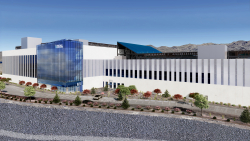China’s ever-increasing missile capability has required US forces to forge a layered approach to countering any aggression in the Indo-Pacific region.
US Air Force B-52H bombers have deployed to Guam’s Andersen Air Force Base as part of Pacific Air Forces’ Resolute Force Pacific (REFORPAC) exercise. Air Force Global Strike Command (AFGSC) announced last week that “multiple” B-52s flew from Minot Air Force Base, North Dakota as part of a Bomber Task Force (BTF) operating as the 23rd Expeditionary Bomb Squadron, assigned to the 5th Bomb Wing.
The move was necessary, since the Air Force ended its continuous bomber deployments to Guam in 2020. BFTs now operate primarily from the United States instead of forward bases, though four B-52s are currently deployed to Diego Garcia in the Indian Ocean, keeping an eye on the Houthi rebels in Yemen.
America’s REFORPAC Exercises Help Prepare for War Against China
REFORPAC is part of a series of Department-Level Exercises (DLE) designed to test Air and Space Force readiness to fight a theater-sized war with China. The exercise also includes allied contingents from Japan, South Korea, New Zealand, Australia, Canada, and the United Kingdom. REFORPAC exercises will cover multiple locations in the Pacific, including Hawaii, Guam, Japan, and international airspace.
The exercise will simulate wartime operations, including rapid-refueling, munitions loading, flightline operations, combat search and rescue, logistics, and multi-lateral aerial refueling. Stress, degraded networks, and logistical disruptions are built into the exercises, forcing airmen to adapt under pressure while still maintaining mission focus. REFORPAC will involve over 300 aircraft, not just the B-52s on Guam.
Every effort is being made to simulate a contested environment. Pacific Air Forces Commander General Kevin Schneider stated that “REFORPAC will require Airmen to move fast, fight under attack, and sustain combat operations in ways we haven’t done in decades.”
China Poses a Theater-Wide Threat to the US Military
China’s ever-increasing missile capability has required US forces to forge a layered approach to countering any aggression in the Indo-Pacific region. The US Navy’s turn to the Pacific has raised questions regarding aircraft and missile range as Chinese hypersonic “carrier killer” missiles could force US flattops to stand thousands of miles off their targets.
Air Force assets operating from unsinkable bases like Guam, Hawaii, and Japan would necessarily be involved in such a conflict, though those bases would certainly be targeted by a hostile Beijing. Exercising those contingencies is vital to US readiness in what is becoming a major global hotspot. Combat and logistical operations could be contested as far away as Hawaii, as locations once considered rear areas now become part of the combat zone.
America Is Investing in Regular Indo-Pacific Exercises
REFORPAC is reminiscent of the annual Cold War era REFORGER (REturn of FORces to GERmany) exercises. Just as REFORGER prepared NATO to fight the Soviet Union, REFORPAC and the other DLE exercises are intended to prepare America to fight the rising Chinese superpower.
A joint US-Australian exercise, dubbed Talisman Saber, is running concurrently to REFORPAC to help simulate coalition operations, along with Resolute Space, which is being led by Space Training and Readiness Command. Other DLE series exercises include Air Mobility Command’s Mobility Guardian; Emerald Warrior, led by Air Force Special Operations Command; and Bamboo Eagle, an Air Combat Command effort focusing on Agile Combat Employment.
China represents the United States’ first peer or near-peer threat since the Soviet Union fell in 1991. Since then, US military efforts have been primarily directed toward smaller-scale wars in Kuwait, Afghanistan, and Iraq, while maintaining a presence in a de-escalated Europe. China’s rise has changed that, requiring a new focus toward the Indo-Pacific region and a potential adversary with the ability to hit back.
Large-scale exercises like REFORPAC are necessary to identify deficiencies that would be deadly in an actual shooting war. REFORGER taught the US and NATO new lessons every year, and reinforced Germany’s flagging morale when American forces were strained by the Vietnam War. It also showed the Soviets that US military formations could quickly deploy to Europe in a crisis, deterring potential Soviet aggression in Eastern Europe. REFORPAC and its counterparts will do the same, while hopefully serving as a deterrent to Chinese adventurism.
About the Author: William Lawson
William Lawson is a military historian focusing on World War II and 20th century conflicts and the American Civil War. His specialty is operational level warfare, especially American amphibious doctrine. He writes on history, politics, and firearms for multiple publications and historical journals. He serves on the editorial advisory board for the Saber & Scroll Journal and Military History Chronicles and is a member of the Society for Military History and the American Historical Association. Lawson is based in Virginia.
Image: Shutterstock / Soos Jozsef.

















